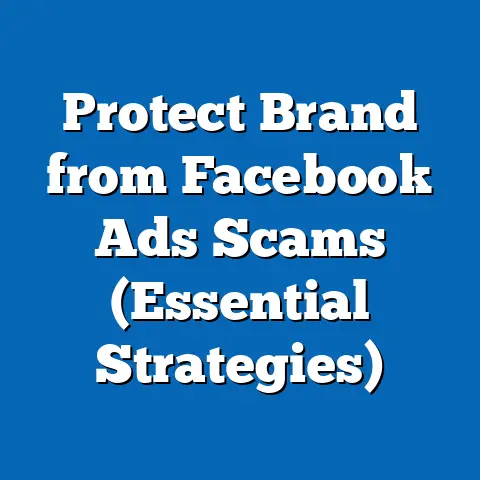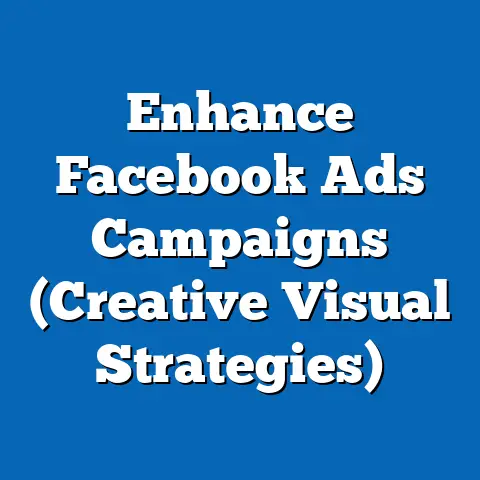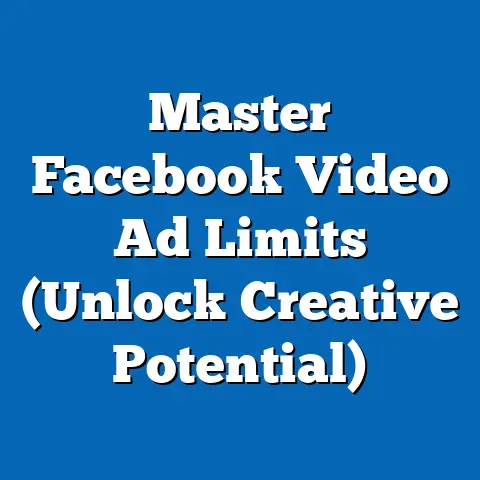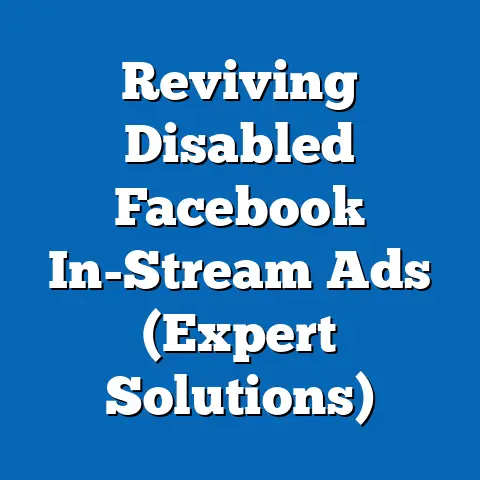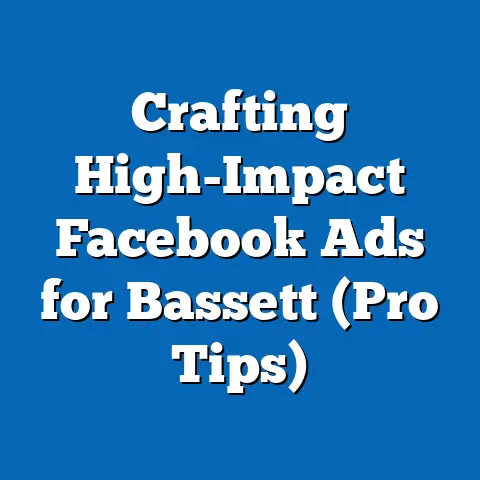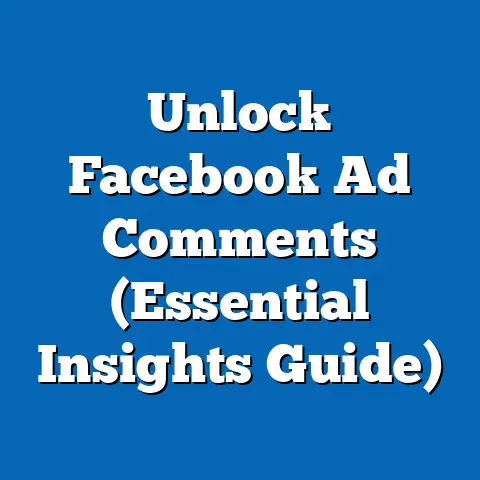Master Facebook Ad Limits for 2025 (Essential Insights)
I remember the first time I truly understood the power of Facebook ads. It was back in 2016, working with a small, local bakery. They were struggling to get the word out about their amazing sourdough, and traditional marketing just wasn’t cutting it. We launched a simple Facebook campaign showcasing their daily specials, targeting people within a 5-mile radius who loved bread. The results were astounding! Within a week, they saw a 30% increase in foot traffic, and their sourdough was flying off the shelves. They were ecstatic, and so was I.
Section 1: Understanding Facebook Ad Limits
So, what exactly are Facebook ad limits? Simply put, they are restrictions placed on your advertising account to ensure a fair and positive experience for both advertisers and users. These limits can be related to your spending, audience size, and even the content of your ads. Think of them as guardrails designed to prevent abuse, maintain ad quality, and ultimately, protect the user experience.
Why are these limits crucial?
- Preventing Fraud & Abuse: Ad limits act as a safeguard against fraudulent activities like running deceptive ads or draining advertising budgets.
- Ensuring Ad Quality: By limiting the number and type of ads, Facebook encourages advertisers to create high-quality, relevant content that resonates with their target audience.
- Protecting User Experience: Limits help prevent users from being bombarded with excessive or irrelevant ads, preserving their overall experience on the platform.
- Maintaining Fair Competition: Ad limits help level the playing field by preventing large corporations from completely dominating the advertising space.
Different Types of Facebook Ad Limits:
Let’s break down the key types of limits you’ll encounter:
- Daily Spending Limit: This is the maximum amount you can spend on all your campaigns combined in a single day. It can be adjusted within your Ads Manager settings.
- Lifetime Spending Limit: This is the total amount you’re willing to spend on a specific ad campaign over its entire duration. Once reached, the campaign will automatically stop.
- Account Spending Limit: Some accounts, particularly newer ones, may have an overall account spending limit. This limit is usually based on your payment history and account reputation.
- Audience Size Limit: While not a “limit” in the traditional sense, targeting an extremely broad audience can dilute your ad effectiveness. Facebook encourages precise targeting to maximize relevance. Conversely, targeting too narrow of an audience might limit your reach significantly.
- Budget per Ad Set: Each ad set within your campaign has its own budget, which determines how much you’re willing to spend to reach your target audience.
- Ad Copy Length: While not explicitly a “limit,” longer ad copy can negatively impact engagement. Facebook recommends keeping your copy concise and engaging.
- Image & Video Size Limits: Facebook has specific requirements for image and video sizes used in ads. Exceeding these limits will prevent your ads from running.
- Number of Ads per Ad Set: While there’s no hard limit, having too many ads within an ad set can dilute performance and make it difficult to track which ads are most effective.
- Character Limits: Certain ad placements have character limits for headlines and descriptions. It’s vital to adhere to these limits to ensure your ad copy displays correctly.
- New Account Spending Limit: New Facebook ad accounts typically have a lower spending limit than established accounts. This limit is in place to protect Facebook and its users from fraudulent activity.
Facebook Ad Spending Trends and User Engagement: Setting the Stage
To understand why mastering these limits is so important, let’s look at some key statistics:
- Global Digital Ad Spending: Digital ad spending is projected to reach \$626.86 billion in 2024, with social media advertising accounting for a significant portion of that. (Source: Statista)
- Facebook’s Ad Revenue: Meta (Facebook’s parent company) continues to generate billions in ad revenue each quarter, demonstrating the platform’s dominance in the digital advertising landscape. (Source: Meta’s Quarterly Earnings Reports)
- Facebook User Base: With billions of active users, Facebook remains one of the largest social media platforms globally, offering unparalleled reach for advertisers. (Source: Meta’s Investor Relations)
- Mobile Advertising: A large percentage of Facebook’s ad revenue comes from mobile advertising, highlighting the importance of optimizing your ads for mobile devices.
- Video Advertising: Video ads are becoming increasingly popular on Facebook, offering engaging and immersive experiences for users. (Source: Facebook Business)
These statistics paint a clear picture: Facebook advertising is a powerful tool, but it’s also a competitive landscape. Understanding and effectively managing your ad limits is crucial for standing out from the crowd and maximizing your ROI.
Takeaway: Understanding Facebook ad limits is the foundation for successful advertising. Familiarize yourself with the different types of limits and how they apply to your specific campaigns.
Section 2: Changes in Facebook Ad Policies for 2025
Predicting the future is never easy, but based on current trends and Facebook’s ongoing evolution, we can anticipate some key changes in ad policies and limits for 2025. Facebook is constantly tweaking its algorithm, updating its policies, and introducing new features to improve the user experience and combat misinformation.
Anticipated Changes:
- Increased Focus on Ad Relevance: Facebook is likely to place even greater emphasis on ad relevance, rewarding advertisers who create highly targeted and engaging content. This could translate into stricter enforcement of ad quality guidelines and potentially, lower costs for relevant ads.
- Enhanced Privacy Measures: With growing concerns about data privacy, Facebook is expected to continue strengthening its privacy measures, potentially impacting targeting options and data collection practices. Advertisers will need to adapt to these changes by focusing on first-party data and privacy-respecting advertising strategies.
- AI-Powered Ad Optimization: Expect to see more AI-powered tools and features designed to help advertisers optimize their campaigns and maximize their ROI. This could include automated budget allocation, ad creative optimization, and audience targeting suggestions.
- More Stringent Ad Content Policies: Facebook is likely to continue cracking down on misleading or harmful content, including stricter enforcement of its ad content policies. Advertisers will need to ensure their ads comply with these policies to avoid being disapproved or having their accounts suspended.
- Emphasis on Transparency: Facebook is likely to increase transparency around ad targeting and data usage, giving users more control over the ads they see. Advertisers will need to be more upfront about their data collection practices and provide users with clear and easy-to-understand explanations.
- Changes in Attribution Modeling: Facebook may adjust its attribution modeling to better reflect the true impact of ads on conversions. This could impact how advertisers measure their ROI and allocate their budgets.
- New Ad Formats and Placements: Facebook is constantly experimenting with new ad formats and placements. Keep an eye out for innovative ways to reach your target audience and engage with them on the platform.
How These Changes May Affect Advertisers:
- Increased Competition: As Facebook’s advertising ecosystem becomes more sophisticated, competition among advertisers is likely to intensify. This means that advertisers will need to be more strategic and creative to stand out from the crowd.
- Higher Ad Costs: The increased competition and emphasis on ad relevance could lead to higher ad costs, particularly for broad targeting and low-quality ads.
- Greater Emphasis on Data Privacy: Advertisers will need to prioritize data privacy and comply with increasingly stringent regulations. This means focusing on first-party data, obtaining user consent, and being transparent about data collection practices.
- Need for Continuous Optimization: With Facebook’s algorithm constantly evolving, advertisers will need to continuously optimize their campaigns to maintain performance. This includes monitoring key metrics, testing different ad creatives, and refining targeting strategies.
Facebook’s Goals with These Changes:
- Improving User Experience: Facebook’s primary goal is to improve the user experience by delivering relevant and engaging ads that don’t feel intrusive or annoying.
- Combating Misinformation: Facebook is committed to combating misinformation and harmful content on its platform. This includes stricter enforcement of ad content policies and increased transparency around ad targeting.
- Promoting Fair Competition: Facebook aims to promote fair competition among advertisers by preventing large corporations from completely dominating the advertising space.
- Enhancing Data Privacy: Facebook is committed to protecting user data privacy and complying with increasingly stringent regulations.
Takeaway: Stay informed about upcoming changes in Facebook ad policies. Proactive adaptation will minimize disruptions and position you for continued success.
Section 3: The Impact of Ad Limits on Campaign Performance
Exceeding or mismanaging ad limits can have a significant impact on your campaign performance, potentially leading to reduced ad reach, audience fatigue, budget overruns, and ultimately, a lower return on investment.
Negative Impacts of Exceeding Ad Limits:
- Reduced Ad Reach: If you exceed your daily or lifetime spending limit, your ads will stop running, limiting your reach and potentially missing out on valuable opportunities to connect with your target audience.
- Audience Fatigue: Bombarding your audience with too many ads can lead to ad fatigue, where users become desensitized to your messaging and stop paying attention. This can result in lower click-through rates and conversion rates.
- Budget Overruns: Failing to monitor your ad spend can lead to budget overruns, where you exceed your allocated budget and potentially incur unexpected costs.
- Lower Return on Investment (ROI): All of the above factors can contribute to a lower return on investment, where you’re spending more money on advertising but not seeing the desired results.
- Account Restrictions: Repeatedly violating Facebook’s ad policies or exceeding your ad limits can lead to account restrictions, potentially limiting your ability to advertise on the platform.
Positive Impacts of Managing Ad Limits Effectively:
- Optimized Ad Spend: By setting realistic budgets and monitoring your ad spend, you can ensure that you’re getting the most bang for your buck.
- Improved Ad Relevance: By targeting your ads precisely and creating high-quality content, you can improve ad relevance and increase engagement.
- Increased Ad Reach: By managing your ad limits effectively, you can ensure that your ads are running consistently and reaching a wider audience.
- Higher Return on Investment (ROI): All of the above factors can contribute to a higher return on investment, where you’re spending less money on advertising and seeing better results.
- Stronger Brand Reputation: By delivering relevant and engaging ads, you can build a stronger brand reputation and foster positive relationships with your target audience.
Case Studies:
- Case Study 1: The Small Business Success Story: A local coffee shop effectively managed its ad limits by setting a realistic daily budget, targeting its ads precisely, and creating engaging content that resonated with its target audience. As a result, the coffee shop saw a significant increase in foot traffic and sales.
- Case Study 2: The Budget Overrun Disaster: A large e-commerce company failed to monitor its ad spend and exceeded its allocated budget by a significant margin. This resulted in a lower return on investment and a negative impact on the company’s bottom line.
Ad Limits and Return on Ad Spend (ROAS):
The relationship between ad limits and ROAS is direct. Effective management of ad limits allows for strategic allocation of resources, leading to higher-quality ads, better targeting, and ultimately, a higher ROAS. Conversely, mismanaging ad limits can lead to wasted spend and a lower ROAS.
Ad Limits and Overall Marketing Strategy:
Ad limits should be considered an integral part of your overall marketing strategy. They should inform your budget allocation, targeting strategies, and ad creative development. By aligning your ad limits with your marketing goals, you can ensure that your Facebook advertising efforts are contributing to your overall success.
Takeaway: Don’t ignore ad limits! Understanding their impact is crucial for maximizing campaign performance and achieving a positive ROAS.
Section 4: Strategies for Mastering Facebook Ad Limits
Mastering Facebook ad limits requires a proactive and strategic approach. Here are some actionable strategies you can implement in 2025:
- Set Realistic Budgets: Start by setting realistic budgets based on your marketing goals, target audience, and industry benchmarks. Don’t be tempted to overspend in the hopes of achieving quick results. Instead, focus on optimizing your campaigns and gradually increasing your budget as you see positive results.
- Optimize Ad Spend: Continuously monitor your ad spend and identify areas where you can optimize your campaigns. This includes testing different ad creatives, refining your targeting strategies, and adjusting your bidding strategies.
- Monitor Performance Metrics: Keep a close eye on key performance metrics like click-through rate (CTR), conversion rate, and cost per acquisition (CPA). These metrics can provide valuable insights into the effectiveness of your campaigns and help you identify areas for improvement.
- Audience Segmentation: Segment your audience based on demographics, interests, behaviors, and other relevant factors. This will allow you to create more targeted ads that resonate with specific segments of your audience, improving ad relevance and engagement.
- Precise Targeting: Utilize Facebook’s precise targeting options to reach the right people with the right message. This includes targeting based on demographics, interests, behaviors, and custom audiences.
- Ad Scheduling: Use ad scheduling to show your ads only during the times when your target audience is most likely to be online and engaged.
- A/B Testing: Continuously test different ad creatives, targeting strategies, and bidding strategies to identify what works best for your target audience.
- Budget Pacing: Facebook offers different budget pacing options, allowing you to control how quickly your budget is spent. Experiment with different pacing options to find the one that works best for your campaigns.
- Leverage Campaign Budget Optimization (CBO): CBO allows Facebook to automatically distribute your budget across your ad sets, optimizing for the best results.
- Use Facebook Pixel: The Facebook Pixel tracks user behavior on your website, allowing you to create retargeting campaigns and measure the effectiveness of your ads.
- Retargeting Campaigns: Retarget users who have previously interacted with your website or ads. Retargeting campaigns are highly effective because they target users who are already familiar with your brand.
- Custom Audiences: Create custom audiences based on your existing customer data, website traffic, or app activity. Custom audiences allow you to target your ads to your most valuable customers.
- Lookalike Audiences: Create lookalike audiences based on your custom audiences. Lookalike audiences allow you to reach new people who are similar to your existing customers.
- Ad Frequency Monitoring: Keep a close eye on your ad frequency to avoid ad fatigue. If users are seeing your ads too often, they may become desensitized to your messaging and stop paying attention.
- Ad Relevance Diagnostics: Facebook’s Ad Relevance Diagnostics tool provides insights into the relevance of your ads. Use this tool to identify areas where you can improve ad relevance and engagement.
- Monitor Ad Performance by Placement: Analyze ad performance across different placements (e.g., Facebook News Feed, Instagram Feed, Audience Network) to identify which placements are most effective for your campaigns.
- Use Automated Rules: Set up automated rules to automatically pause or adjust your campaigns based on specific performance metrics.
- Stay Up-to-Date: Stay up-to-date with the latest Facebook ad policies and best practices. Facebook is constantly evolving, so it’s important to stay informed about the latest changes.
Takeaway: Proactive budget management, continuous optimization, and strategic targeting are essential for mastering Facebook ad limits.
Section 5: Tools and Resources for Managing Ad Limits
Fortunately, you don’t have to navigate the complexities of Facebook ad limits alone. Several tools and resources can help you track, manage, and optimize your campaigns.
Facebook Native Tools:
- Ads Manager: The Ads Manager is your central hub for creating, managing, and tracking your Facebook ad campaigns. It provides a wealth of data and insights that can help you optimize your campaigns and stay within your ad limits.
- Facebook Pixel: The Facebook Pixel is a small piece of code that you can install on your website to track user behavior. This data can be used to create retargeting campaigns and measure the effectiveness of your ads.
- Facebook Analytics: Facebook Analytics provides detailed insights into user behavior on your website and app. This data can be used to understand your audience better and optimize your marketing efforts.
- Ad Relevance Diagnostics: The Ad Relevance Diagnostics tool provides insights into the relevance of your ads. Use this tool to identify areas where you can improve ad relevance and engagement.
- Campaign Budget Optimization (CBO): CBO allows Facebook to automatically distribute your budget across your ad sets, optimizing for the best results.
- Automated Rules: Set up automated rules to automatically pause or adjust your campaigns based on specific performance metrics.
- Facebook Business Suite: This tool allows you to manage your Facebook and Instagram accounts in one place, simplifying your social media marketing efforts.
Third-Party Solutions:
- AdEspresso: AdEspresso is a popular Facebook ad management tool that offers a range of features, including A/B testing, budget optimization, and reporting.
- Hootsuite Ads: Hootsuite Ads is another popular ad management tool that offers similar features to AdEspresso.
- Smartly.io: Smartly.io is a more advanced ad management tool that is designed for large enterprises. It offers a range of features, including automated campaign optimization, creative management, and reporting.
- Revealbot: Revealbot is a Facebook ad automation tool that helps you automate tasks like bidding, budget allocation, and ad creative testing.
- Madgicx: Madgicx is an AI-powered ad management tool that helps you optimize your campaigns and maximize your ROI.
The Role of Analytics and Reporting:
Analytics and reporting are crucial for monitoring ad performance and staying within your ad limits. By tracking key metrics like CTR, conversion rate, and CPA, you can identify areas where you can optimize your campaigns and improve your ROI. Regularly review your reports and make adjustments to your campaigns as needed.
New Features and Updates from Facebook in 2025:
Stay informed about any new features or updates from Facebook that will assist advertisers in 2025. Facebook is constantly evolving, so it’s important to stay up-to-date with the latest changes. Check the Facebook Business blog and other industry resources for the latest news and updates.
Takeaway: Leverage both Facebook’s native tools and third-party solutions to streamline ad management and optimize for performance within established limits.
Section 6: The Future of Facebook Advertising Beyond 2025
Looking beyond 2025, the future of Facebook advertising is likely to be shaped by several key trends and technological advancements.
Potential Technological Advancements:
- Artificial Intelligence (AI) and Machine Learning (ML): AI and ML will play an increasingly important role in Facebook advertising, automating tasks like campaign optimization, ad creative generation, and audience targeting.
- Augmented Reality (AR) and Virtual Reality (VR): AR and VR technologies will create new opportunities for advertisers to engage with their target audience in immersive and interactive ways.
- Blockchain Technology: Blockchain technology could be used to improve transparency and accountability in the advertising ecosystem, preventing fraud and ensuring that ads are reaching the right people.
- Metaverse Advertising: As the metaverse continues to evolve, Facebook is likely to introduce new advertising opportunities within its virtual world.
Impact on Ad Management:
These technological advancements will have a significant impact on ad management, making it more automated, data-driven, and personalized. Advertisers will need to adapt to these changes by embracing new technologies and developing new skills.
Upcoming Trends in Digital Marketing:
- Personalization: Personalization will become even more important in digital marketing, as consumers expect to see ads that are relevant to their individual needs and interests.
- Video Marketing: Video will continue to be a dominant force in digital marketing, as it offers an engaging and immersive way to connect with your target audience.
- Influencer Marketing: Influencer marketing will continue to grow in popularity, as consumers trust recommendations from influencers more than traditional advertising.
- Voice Search: Voice search is becoming increasingly popular, so advertisers will need to optimize their ads for voice search.
- Social Commerce: Social commerce is the practice of selling products and services directly through social media platforms. This trend is expected to continue to grow in popularity, as consumers increasingly shop online.
How Businesses Approach Facebook Ads:
Businesses will need to adopt a more strategic and data-driven approach to Facebook advertising. This includes setting clear marketing goals, targeting the right audience, creating high-quality content, and continuously optimizing their campaigns.
Takeaway: Embrace technological advancements and stay ahead of emerging trends to future-proof your Facebook advertising strategy.
Conclusion
Mastering Facebook ad limits is not just about avoiding penalties; it’s about maximizing your advertising effectiveness and achieving your marketing goals. In 2025, understanding these limits, adapting to policy changes, and leveraging the right tools will be crucial for success.
By setting realistic budgets, optimizing your ad spend, targeting your audience precisely, and continuously monitoring your performance, you can navigate the complexities of Facebook advertising and drive meaningful results. Remember, Facebook is a dynamic platform, so staying informed and adaptable is key.
The story of Sarah, the bakery owner, serves as a constant reminder: Enthusiasm is great, but strategic planning and understanding the platform’s rules are essential for long-term success.
Call to Action
Stay informed about changes in Facebook advertising, continuously evaluate your ad strategies, and never stop learning. The world of digital marketing is constantly evolving, and the best way to stay ahead of the curve is to be a lifelong learner. Now go forth and conquer the Facebook advertising landscape!

